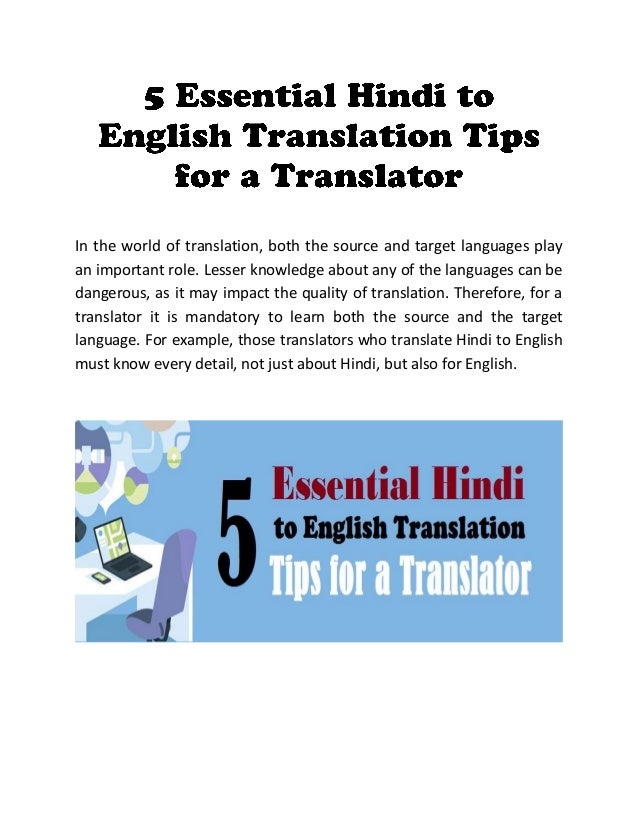What is history’s earliest recorded translation? Which book or website is the most translated in the world? What translations have had the greatest impact on society? If you’ve ever gazed out the window and pondered such questions about translation, join the club!
And look no further, because these translation facts will blow your mind and open your eyes to the amazing world of translation:
10. History’s First Translation Was The Epic Of Gilgamesh
First on the list of translation facts is the most ancient: The Epic of Gilgamesh is the oldest surviving literary work from the human endeavor. The authors wrote in Sumerian, using an ancient cuneiform writing system. Cuneiform writing emerged in Mesopotamia around 2700 BCE.
Translations of Gilgamesh into Asiatic languages are the oldest known translations from one writing system to another. They were translated into Asiatic languages around 2000 BCE. While that translates a pretty old profession, verbal interpretation predates even that.
09. Translation Today Is A Nearly $40 Billion Industry
An estimated 300,000 professional translators work in the world today. It’s hard to get an exact count because many are freelance workers. Some, however, work for one of Earth’s 26,104 commercial language service providers.
Last year’s estimates put the industry’s annual revenue at $40 billion worldwide and growing fast.
The five most common target languages are:
The top five origin languages are:
It looks like the Germans sure do love to read! There is a wealth of similar translation facts and statistics available at UNESCO’s amazing Index Translationum site.
08. The World’s Most Translated Website Is The Jehovah’s Witnesses’ Homepage
You read that right. The most translated website isn’t a corporate leader like Apple, whose website serves customers in 128 languages and regional dialects. Nor is it Wikipedia, with its 43 million pages, which you can read in 286 languages.
Or perhaps you thought it might be a world religious leader. The Vatican’s website, however, only translates into nine languages, including English and Latin.
The official website of the Jehovah’s Witnesses, a historically recent American sect, has more than all of these combined. Reports as recent as last year say the Jehovah’s Witnesses website translates into over 780 languages!
At the time of this writing, they list 913 language options on their website. That includes obscurities like Pennsylvania Dutch, which is a colonial American form of German (not Dutch); Zimbabwe Sign Language; and seven variations of Thai.
Though it’s a small and fairly new religion, Jehovah’s Witness groups are prominent in the world of translation facts. They’re on a mission to spread their faith to every corner of the globe. And they’re making active use of language translation to achieve their goals.
Among translation facts, this one reveals a missionary zeal that might come off as laudably inclusive outreach or devastatingly colonial proselytizing, depending on your religious sympathies.
07. The World’s Most Translated Book Is The Bible
With the Jehovah’s Witnesses’ love of languages, it should come as no surprise that their publications are some of the most translated in the world. Their publishing arm, the Watchtower Society, produces immense volumes of books and tracts.
But did you know that of the top ten most translated texts in history, a full seven of them are Watchtower Society publications?
The remaining three in the all-time top ten most published works are:
- The Bible: the single most translated text in history, available in 554 languages (although some individual books of the Bible are translated into as many as 2,932 languages)
- The UN’s Universal Declaration of Human Rights: translated into 462 languages
- The Little Prince by Antoine de Saint-Exupéry: first published in 1943, it’s the world’s most translated novel, featured in 300 languages. But a drawing of an elephant inside a snake needs no translation!
Translation facts about the most published works and authors are always fascinating. The most translated authors, by the way, are:
- Agatha Christie
- Jules Verne
- William Shakespeare
06. The Feast Of St. Jerome Is International Translation Day
St. Jerome is a celebrated translator from Christian history. He translated the Old Testament into Latin directly from the original Hebrew. His feast day, which marks his death on September 30th, has also become International Translation Day.
As the patron saint of translation, Jerome transcends religion. His prolific career was rich with written works and translation facts that make for an interesting story of their own.
05. Gabriel Garcia Marquez Loved The English Translation Of One Hundred Years Of Solitude

Here’s something you might not expect on a list of translation facts: an author who didn’t have a problem with their translation! Colombian literary giant Gabriel Garcia Marquez admired Gregory Rabassa’s English translation of his novel, One Hundred Years of Solitude. So much so, that he considered it a work of art in itself.
“A good translation is always a re-creation in another language. That’s why I have such great admiration for Gregory Rabassa,” he told The Paris Review in 1981. “My books have been translated into 21 languages and Rabassa is the only translator who has never asked for something to be clarified so he can put a footnote in. I think that my work has been completely re-created in English.”
Rabassa is responsible for the impeccable opening line of the English version: “Many years later, as he faced the firing squad, Colonel Aureliano Buendia was to remember that distant afternoon when his father took him to discover ice.”
In his memoir, If This Be Treason, Rabassa recounts how he chose “firing squad” instead of “firing party,” and how he faced criticism for translating conocer into “discover” instead of “experience” or “be familiar with.”
He is even responsible for the immortal title, which he could just as easily have translated to a weaker rendition, like A Hundred Years of Solitude, or One Hundred Years of Loneliness.
“I went for ‘solitude’ because it’s a touch more conclusive,” the translator said, “and also can carry the germ of ‘loneliness’ if pushed along those lines, as Billie Holiday so eloquently demonstrated.”
04. Nabokov Once Blamed His Translator For His Bad Writing
Vladimir Nabokov wrote his early novels and novellas, like Camera Obscura, in his mother tongue of Russian. A British translator named Winifred Roy translated Camera Obscura into English.
Nabokov hated the Roy translation. He called it “sloppy” and “full of blunders.” He went so far as to write his English version of Camera Obscura, editing it heavily and retitling it as Laughter in the Dark. But the poor quality may not have been the translator’s fault, after all.
In 2015, journalist and Nabokov scholar John Colapinto uncovered Nabokov’s original draft of Camera Obscura, and said it was so bad–and heavily marked up in Nabokov’s handwriting–that it showed Nabokov “was indeed capable of writing a second-rate novel. (He knew it, and rewrote it.)”
Colapinto added that the embarrassingly messy original “also exonerates, to a degree, poor forgotten Winifred Roy, whose supposed ineptitude has long been the accepted reason for Nabokov’s rewrite.”
Thanks to Colapinto’s journalistic efforts, these translation facts finally saw the light of day. Luckily for Nabokov (and Roy), most of Camera Obscura was forgotten in the public mind when the author revisited its themes to write his most popular novel, Lolita. He wrote Lolita directly in English.
03. A Single Translation Mistake Cost A Multinational Bank $10 Million
In 2009, British multinational bank HSBC launched a marketing campaign under the slogan “Assume Nothing.” However, there was a failure to localize for foreign markets. The slogan translated in many languages to “Do Nothing.”
The mistake led to an embarrassing scramble for the global financial leader. It cost them $10 million to do some emergency rebranding in the hopes of saving their image.
This is one of those translation facts that makes you realize how important a single word can be. But it gets even more harrowing than that…
02. A One-Word Mistranslation Lead To The Atomic Bomb Dropping On Hiroshima
At the end of World War II, allied forces demanded a full surrender from an already beaten Japan. When the Japanese prime minister sent his reply, English translators misinterpreted the word tokusatsu as an expression of stony contempt.
The United States dispatched the bomb unnecessarily, not realizing that Japan was only trying to buy some time to gather a more formal response. Had they known the translation facts, they would’ve realized that a surrender was underway. But it was too late. This translation mistake cost 80,000 lives.

01. 5 Known People On Earth Are The Last Speakers Of Their Languages
In public schools, we learn about Spanish, French, German, and maybe Japanese. But there are over 7,000 living languages on Earth today. Many more have gone extinct, which is what happens when the last living native speaker of a language dies. There are a multitude of interesting translation facts about endangered languages.
An endangered language is a language at risk of becoming extinct. When children stop learning a language, it’s moribund. Many endangered and moribund languages are indigenous, and a few have only one remaining speaker.
Christina Calderón, Yaghan
Cristina Calderón, born in 1928, is the last living speaker of Yaghan. Also, following the death of her sister in 2003, she is the last full-blooded Yaghan, an indigenous people group from Tierra del Fuego in the southernmost reaches of South America. Chile’s National Council of Culture and the Arts has officially recognized Cristina Calderón as a living human treasure.
Charlie Mungulda, Amurdag
Charlie Mungulda, of Australia’s Northern Territory, is the last living speaker of Amurdag. Amurdag is an Indigenous Australian language. Before the colonial invasion, Australia had over 200 nations and languages. Australian linguists have been working with Charlie Mungulda to preserve records of Amurdag for posterity.
Verdena Parker, Hupa
Verdena Parker, of Northern California’s Hupa tribe, is the last living speaker of Hupa. Her grandmother taught it to her, while much of the rest of her generation went to colonial boarding schools and lost contact with their language and culture. Verdena Parker has worked with UC Berkeley and Stanford researchers to create a historical record of the Hupa language.
Gyani Maiyi Sen, Kusunda
Gyani Maiyi Sen, born around 1937, is the last living speaker of Kusunda. A hundred or so Kusunda people still live in Western and Central Nepal, but deforestation has pushed them out of their forest homes. “The new generation doesn’t want to speak the language,” Gyani Maiyi Sen said in an interview.
“They make fun of the language, and that it doesn’t make sense!” This is due in part to prejudice against the Kusunda people, and because younger tribal members like Gyani Maiyi Sen’s son, must spend their time farming to survive. He doesn’t feel he has the time or resources to help preserve the language. Kusundra is a language isolate, meaning it isn’t related to any other languages.
Marie Wilcox, Wukchumni
Marie Wilcox, born in 1933, is the last surviving speaker of Wukchumni. Wukchumni, in turn, is the last surviving dialect of the Tule-Kaweah language of the Yokutsan family. The Yokut people of Northern California, and their languages, were the victims of disease, missionaries, and colonial invasion, especially during California’s gold rush. Although she is the only fluent speaker of Wukchumni, Marie Wilcox teaches weekly language classes for other tribal members. She has also published a Wukchumni dictionary.
Translation Facts Made You Think!
Translation plays a bigger part in history, culture, and human life than we sometimes give it credit for. It’s easy to overlook the foundational and far-reaching impacts translation can have on our world. But now you know!
And now that you’ve read these translation facts, the next time you meet a modern practitioner of this ancient and storied profession, you can shake their hand. Maybe you can even thank them for helping to bring the world together a little bit more.

